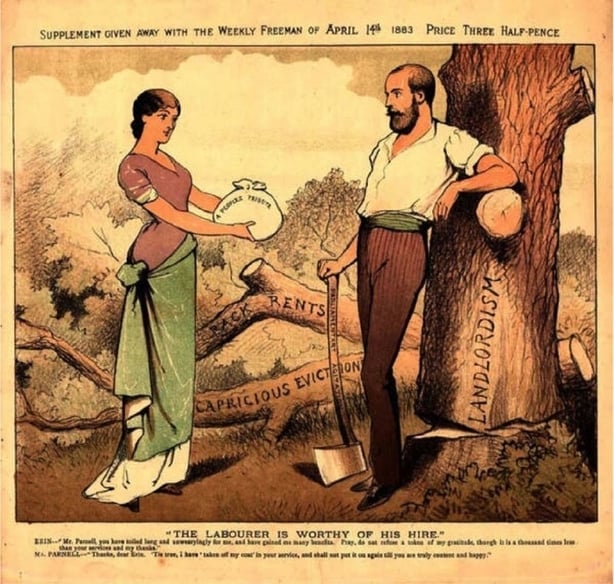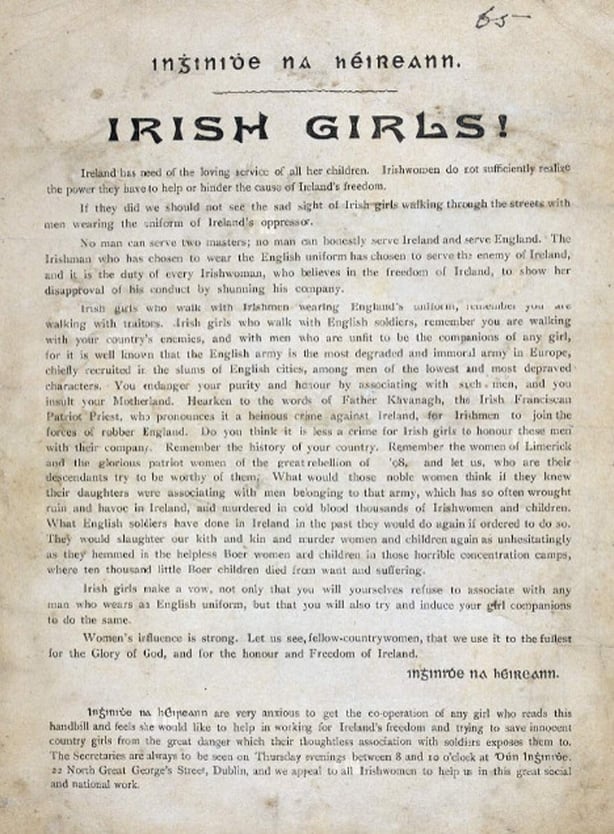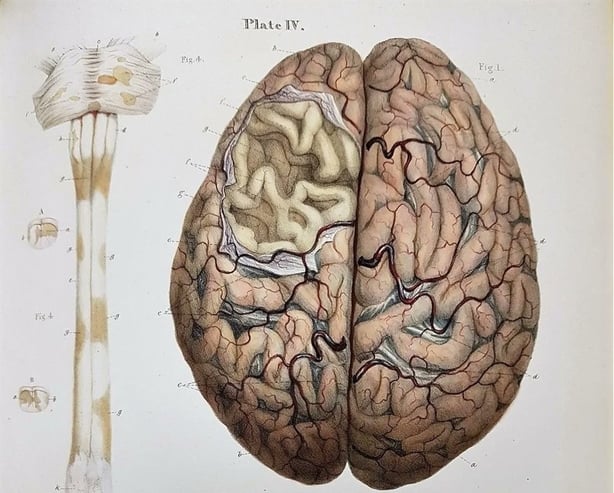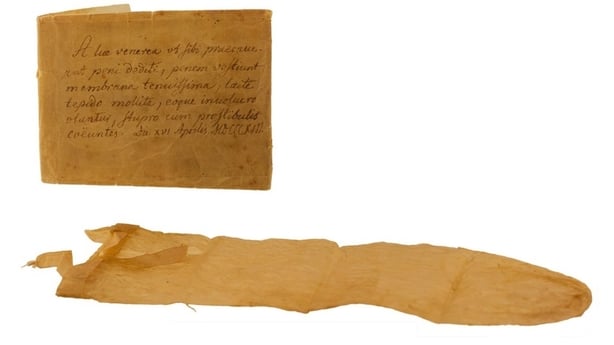Analysis: sexual health played a central role in the political and cultural discourse of late 19th and early 20th century Ireland
By Lloyd (Meadhbh) Houston, University of Alberta
Any of us might wake up tomorrow syphilitic. Or so, at least, believed James Joyce. Discussing his brother’s fascination with what he would later term ‘syphilisation’ in a 1904 diary entry, Stanislaus Joyce records that: Jim […] talks much of the syphilitic contagion in Europe [and] is at present writing a series of studies in it in Dublin, tracing practically everything to it. The drift of his talk seems to be that contagion is congenital and incurable and responsible for all manias and being so, that it is useless to try to avoid it.
Though undoubtedly hyperbolic, the young author’s perspective was hardly idiosyncratic. Indeed, even a brief survey of late nineteenth- and early twentieth-century Irish history reveals the central role that sexual health, as a concept, discourse, and subject of debate, played in the nation’s political and cultural life.
Unsurprisingly, the figure of Charles Stewart Parnell and the rancour that followed the exposure of his long-standing relationship with Katharine O’Shea – the wife of a subordinate in the Irish Parliamentary Party – loom large in such an account.
We need your consent to load this rte-player contentWe use rte-player to manage extra content that can set cookies on your device and collect data about your activity. Please review their details and accept them to load the content.Manage Preferences
From RTÉ Radio 1's Today with Claire Byrne, the life of Katherine O'Shea 100 years on
Prior to the revelations of the 1889 O'Shea divorce case, Parnell’s public persona had been calibrated to project an air of virile celibacy and hygienic self-mastery deliberately at odds with British stereotypes of the hysterically ungovernable Irish. In its aftermath, the reputation for superhuman reserve upon which the 'Parnell myth’ rested, combined with the sexual nature of his transgressions, lent potency to sexual health rhetoric which his opponents were quick to exploit.
In editorials and speeches, Parnell's former lieutenant, Timothy Healy, denounced him as a 'crazy man' whose lack of self-control was the result of 'strong hereditary predispositions towards mental disturbance’; a diseased Lothario who spent his time in yonic ‘caves and holes’ and whose ‘bad health’ could only be explained by a diagnosis of ‘Kitty on the brain’.

In Healy's lurid account, Parnell became at once a hereditary sex maniac and the maniacal victim of sexual excess, in a manner evocative of contemporary theories of degeneration and the more alarming symptoms of advanced syphilis. Anxieties over hygiene and heredity were to become a recurrent feature of Irish political discourse in the aftermath of Parnell's fall, and could be wielded in often contradictory ways.
On the one hand, when nationalists such as Maud Gonne and Arthur Griffith wanted to discourage young Irishmen from enlisting in the crown forces, they did so by presenting the British military as a body of men 'more than half leprous with venereal excess’, and calling upon ‘Irish girls’ to eschew the company of the ‘most degraded and immoral army in Europe’.

On the other hand, when W.B. Yeats wished to denounce those followers of Gonne and Griffith he believed had disrupted the opening run of J.M. Synge’s The Playboy of the Western World (1907) out of a scandalised sense of national purity, he recounted how a ‘young doctor’ who had witnessed the ensuing riots had struggled to restrain himself from ‘jumping on to a seat’ and ‘pointing out’ everyone he was presently ‘treating for venereal disease’.
Similar arguments could also be deployed to stigmatise the nation's perceived racial and ethnic 'Others’, particularly its Jewish population. In the 1904 sermon that inspired the Limerick pogrom, Father John Creagh accused the city’s Jewish pedlars of distributing ‘indecent pictures’ and ‘impure books’ to ‘innocent country people’, and aiding in the ‘corruption of morals by other means’, most notably violating the sanctity and purity of the Irish marital home.

This tendency to frame sexual health in sectarian ways, and to fret over ‘impure books’ while doing so, did not diminish in the aftermath of independence. Though it emerged out of a long-standing campaign to limit the circulation of the British tabloid press, the 1929 Censorship of Publications Act, and its proscriptions against all discussions of birth control and abortion, became the focus of a heated debate over the size and composition of the Irish population.
Writing in support of the Act, the Irish Rosary asserted that the ‘modern mania of race suicide’ had gained ‘no footing among the plain people of Ireland, that is, among the Catholic people’—a fact attested to by the healthy birth-rate of the ‘peasant classes in rural areas’ and ‘the proletariat of Dublin’. By contrast, they opined, Irish Protestants, who, when asked to choose between a larger family and a new car, ‘prefer the car’, were headed for ‘extinction’.

For the Act's Protestant opponents, the inverse was true. If the theories of economist Thomas Malthus concerning the relationship between a nation's population and its natural resources were accurate, then the unchecked fertility of Ireland’s Catholics which the Act seemed to mandate risked bringing about another Famine. Writing in the Spectator, W.B. Yeats wryly noted that, if the Act passed, the Catholic Church would be obliged either to ask married couples to live in celibacy or to rely upon Jonathan Swift’s 'Modest Proposal’ to make 'love self-supporting’.
In the event, of course, neither of these apocalyptic predictions came to pass. Instead, Irish women, who, as Hanna Sheehy-Skeffington noted, were 'always to be legislated for by the other sex' in reproductive matters, were left to find ways to circumvent the ban, or choose between the Scylla of unwanted pregnancy and the Charybdis of illegal termination.
Read more: Stories from the sex lives of 20th century Irish men and women
It was not without some justification then that Kate O'Brien, reflecting on Ireland’s newly minted Constitution and its emphasis on the 'imprescriptible’ centrality of ‘the Family’ to national life in her 1938 novel Pray for the Wanderer, would number its architect, Éamon de Valera, among those thoroughly ‘up-to-date’ dictators who instruct their citizens on ‘how they are to breed’.
As these examples suggest, while not every Irish public figure in this period shared Joyce’s belief in the endemic nature of syphilis, many shared his tendency to interpret his contemporary milieu through the prism of sexual health. To trace the history of sex, health, and their interrelation in late nineteenth- and early twentieth-century Irish culture as I have done here is thus also to trace the nation’s political history in a crucial phase of its development, and vice-versa.
Dr Lloyd (Meadhbh) Houston is Banting Postdoctoral Fellow in English at the University of Alberta. For a fuller discussion of the medicalization and politicization of sex in Irish culture, check out their newly published book, Irish Modernism and the Politics of Sexual Health (Oxford University Press, 2023).
The views expressed here are those of the author and do not represent or reflect the views of RTÉ

